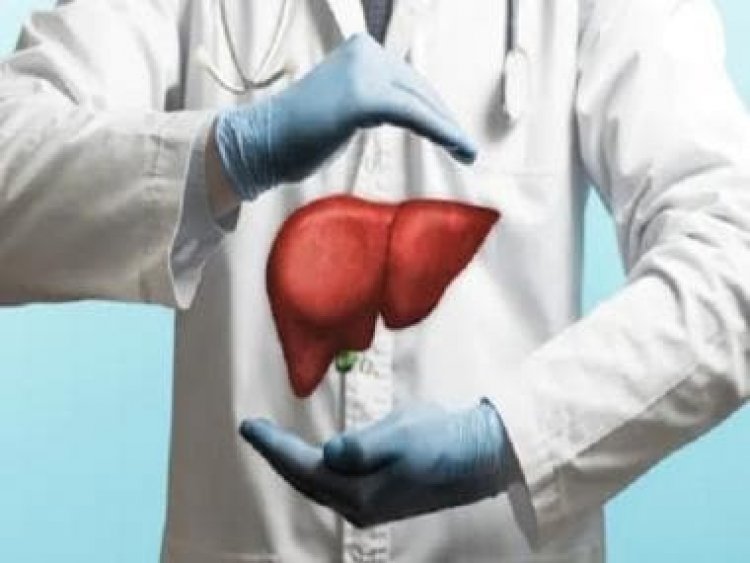What Is fatty liver? How and why does one get diagnosed with fat in liver
What Is fatty liver? How and why does one get diagnosed with fat in liver

Fatty liver disease is a condition wherein fats accumulate in the liver. It may be a result of consuming too much alcohol. This is called alcoholic fatty liver disease (ALD). There may be reasons other than alcohol that may lead to fatty liver. These are termed as non-alcoholic fatty liver disease (NAFLD) and presents itself in the form of macrovesicular alterations without the presence of steatosis or lobular inflammation.
ALD can be halted by curbing the intake of alcohol. However, prolonged alcohol intake can lead to further complications including enlarged liver, alcoholic hepatitis, cirrhosis and can even prove fatal and lead to liver failure.
On the other hand, NAFLD can be divided in 2 groups – steatosis or non-alcoholic fatty liver (NAFL) and non-alcoholic steatohepatitis (NASH). NAFL presents itself with steatosis in liver corresponding with hepatocyte ballooning, although without any cellular injury. NASH on the contrary presents itself with hepatic steatosis along with hepatocellular injury, mallory bodies, and mixed lymphocytic and neutrophilic inflammatory infiltrate in perivenular areas, with or without fibrosis. Thus, NAFLD is a spectrum of disease extending from a simpler NAFL to a more complicated NASH and cirrhosis.
The possible causes of NAFLD can be metabolic syndrome and its associated conditions like obesity, diabetes and hyperlipidemia. Apart from alcohol and metabolic syndrome, the other causes of fatty liver disease may be intake of certain medications, metabolic storage diseases, inherited diseases like Wilson’s disease, autoimmune conditions like celiac sprue and alterations in diet viz. parenteral nutrition, malnutrition, over nutrition, starvation diet etc.
Approximately 60-90 per cent of individuals who drink more than 60 g of alcohol per day have been shown to have hepatic steatosis. NAFLD is the most common cause of chronic liver disease and the second most common cause of cirrhosis. It is estimated that the prevalence of NAFLD is between 11.5 per cent and 46 per cent in the general population, whereas, the prevalence of NASH is in the range of 2 per cent and 3 per cent. In patients with severe obesity undergoing bariatric surgery, up to 90% are found to have NAFLD and some even have cirrhosis, while insulin resistance is the main predictor for NASH.
While evaluating ALD, many factors need consideration. ALD can be clinically challenging to diagnose as there is no single laboratory or imaging test that can confirm the diagnosis. Also, the patient may present with no symptoms, and to top it up may have no changes in liver enzyme levels. However, if the patient has had a history of chronic alcohol consumption, a diagnosis can be made based on laboratory finding after ruling out other causes of chronic liver diseases including chronic viral hepatitis, autoimmune hepatitis, hemochromatosis and drug related hepatotoxicity.
In general, it is recommended that ALD should be suspected in any patient who has a history of prolonged alcohol consumption and who presents with abnormal enzyme levels, especially when aspartate aminotransferase (AST) is more than that of alanine aminotransferase (ALT), hepatomegaly, symptoms of chronic liver disease, imaging studies pointing to steatosis, fibrosis or cirrhosis, or biopsy suggesting macrovesicular steatosis. Nevertheless, it’s crucial to know that the liver enzymes may not always be risen in patients of ALD and the levels of alanine aminotransferase may not always correlate well with severity of the disease. However, the pattern of AST being always two to three times higher than ALT levels is commonly seen in alcoholic liver injury. Elevated serum gamma-glutamyltranspeptidase (GGT) is another diagnostic criteria.
As far as NAFLD is concerned, laboratory tests are not specific and cannot differentiate between NAFL and NASH. However, initial evaluation should always include liver chemistries, complete blood count, viral hepatitis panel, insulin resistance, lipid profile and iron to rule out viral etiologies, hemochromatosis and any other likely conditions. In case the liver enzymes are elevated or there is a family history of cirrhosis, additional tests like antinuclear antibody, smooth muscle antibody, a1-antitrypsin, ceruloplasmin and thyroid-stimulating hormone should be considered. Imaging studies are a mainstay in the diagnosis of NAFLD. NAFL and NASH can however only be distinguished with the help of histology and liver biopsy. Even so, not all patients with NAFLD require to undergo a biopsy which is determined on the basis of the risk factors, laboratory results, and the severity of the disease.
The author is Head of Department, Biochemistry, SRL Diagnostics. Views are personal.
Read all the Latest News, Trending News, Cricket News, Bollywood News,
India News and Entertainment News here. Follow us on Facebook, Twitter and Instagram.
What's Your Reaction?



























































